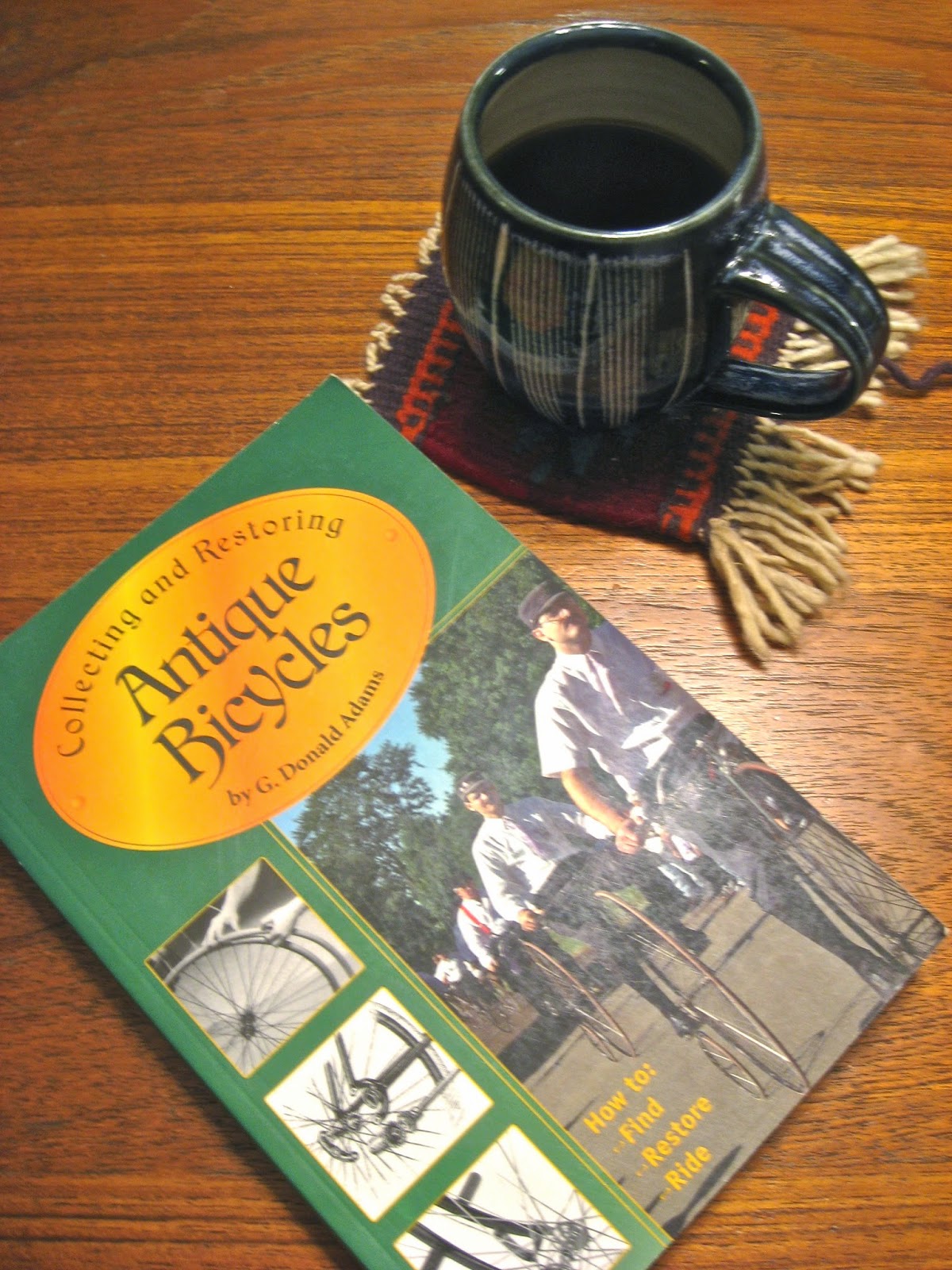From the Library: Collecting and Restoring Antique Bicycles
Not that I ever envision a scenario in which one of the many hundreds of bicycles covered in this book would ever find its way to my work stand but...
This book was such a find that there was never the least bit of hesitation to purchase it. With chapters coving the Hobby Horse (1817-1821), the Boneshaker (1865-1871), the Ordinary (1871-1892), the High Wheel Safety (1876-1891), the Solid Tire Safety (1885-1894), the Pneumatic Tire Safety (1892-1900), and the Post 1900 Safeties, very few of us will ever own (let alone witness one being ridden), collect or restore one of these bicycles. So, while there may not be a more practical application, there is so much information enclosed within the front and back covers, to make this book an invaluable historical research tool.
Nearly every page set includes a photograph, engraving, or sketch of the bicycles themselves, one of their many component parts, or accoutrements, such as olde time cycling clothes. As you might expect some of the illustrations depict two-wheelers that are truly weird by today's standards, yet with design elements that are clear precursors to many of today's standard features - suspension (the Columbia Spring Fork from 1889), the use of bamboo (1897), removable chain ring (Columbia 1895). And then there are others that make you wonder how their idea ever sold.
The book ends with an appendix - nearly fifty pages - listing 2100 American brands, the company that manufactured or distributed them, their location, and date of first notice, before 1918. Who knew there were so many dating to those earliest years? This book may have been geared toward the collector, but I see it as an invaluable resource for anyone interested in bicycle history and mechanics.
Adams, G. Donald Collecting and Restoring Antique Bicycles Orchard Park, NY: Pedaling History, the Burgwardt Bicycle Museum, 1996


Comments
Post a Comment